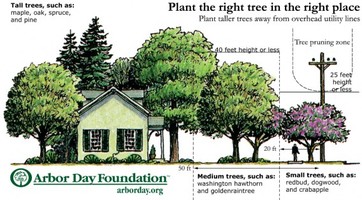|
Well summertime is definitely here in full force in my home state. As I write this it is currently 100 degrees outside and it is putting my AC to work today. While I get to enjoy the cool conditioned confines of my house it reminds me that not everyone can have AC or chooses to use AC because of its environmental impacts. AC just in the USA is responsible for emitting 100 million tons of CO2 into the atmosphere every year which is the equivalent of 21 million cars driving around for 1 year.  It is responsible for about 5% of energy use in the states and is part of our energy use matrix that could be reduced by better building techniques that use proper solar aspect, earth sheltering and other passive methods of maintaining cooler temperatures. But all that applies to new built or houses that are undergoing some pretty extreme renovations. What can you do to your existing structure to make it cooler now or relatively soon? Well to be honest nothing beats good planning and design right from the start but there are a few things you can do that passively reduce the heat in your home without using electricity. I will go over just 3 of them hear and I bet with some imagination you could come up with some of your own. Lighter colored siding and roofs This one is painfully obvious I know and it just makes sense in most locations here in the US. As I am sure you are aware a black shirt is a lot hotter on a summer day than a lighter colored shirt. The same concept applies to your house the darker the siding and roofing the more infrared radiation it absorbs the hotter your whole house gets. To throw some numbers at you a dark colored home will absorb 70-90% of the solar heat that hits it. About 30% of unwanted heat in a home come through the roof. It also matters what your roofing is made of. For example you look at asphalt shingles which are one of the most common roofing materials in the world it doesn’t matter if they are black or white they still absorb 70% of the incoming solar radiation. While other materials like steel are either already going to be cooler or can be made cooler much easier. In addition to having lighter colored exterior you should also install reflective barriers in your attic to keep those hot infrared wavelengths out of your attic. Awnings on your windows In a perfect world where all home and buildings are built to passive solar house standards your building would have either been designed with a generous roof overhang to shield from the summer sun or some other method of deflecting that sunlight. But unfortunately for most of us that is not the case and we have to try other methods. Awnings can reduce heat gain by south facing windows by up to 65% while on west facing windows it can reduce heat gain by 77%. This can add up to quite an energy savings over a long period of time and should easily pay for the purchase and installation of the awnings. They can be fixed awnings or ones that can be rolled up in the winter to increase your solar heat gain through those same windows you protect in the summer. They can found at any home improvement store and are relatively easy to install on existing structures. Plant trees, shrubs or other large leafy things It has long been known in certain circles that trees are capable of altering weather conditions in small or larger areas depending on how many trees are involved. These are commonly know as windbreaks and are common features of the Great Plains in the US. But some the same benefits enjoyed by homeowners in the country get can also be enjoyed by homeowners in the city as well. If you have the room on the south and west sides of your house then large shade trees are the ticket for you. If planted correctly large shade trees in time can reduce your home's cooling needs by 35% some studies show. This however is a long term goal and you won’t realize the full benefits for years to come. Other options to consider along with trees would be tall shrubs or other climbing vines on trellises to shade the walls of your house. Trees or other leafy things are your best long term tools to keeping your house cooler as they grow and maintain themselves. They also release water vapor through the leaves which actually cools the surrounding area, so enough trees and other plants around your house can actually create a cooler microclimate around your house. All these add ons can be used in conjunction with each other to provide a cumulative cooling effect effect would should have a measurably impact on your summer cooling bill. For more information like this feel free to check out other articles here on the Green Living Library and the sources below. Sources: http://energy.gov/energysaver/air-conditioning https://www.epa.gov/energy/greenhouse-gas-equivalencies-calculator http://www.nrel.gov/docs/legosti/old/15771.pdf http://energy.gov/energysaver/energy-efficient-window-treatments https://www.arborday.org/trees/climatechange/summershade.cfm
1 Comment
|
AuthorHello my name is Josh Larson and I am the creator of the Green Living Library. Here on the blog you will find updates to content found in the Green Living Library as well as stories from those living the sustainable life already. Archives
December 2021
Categories
All
|